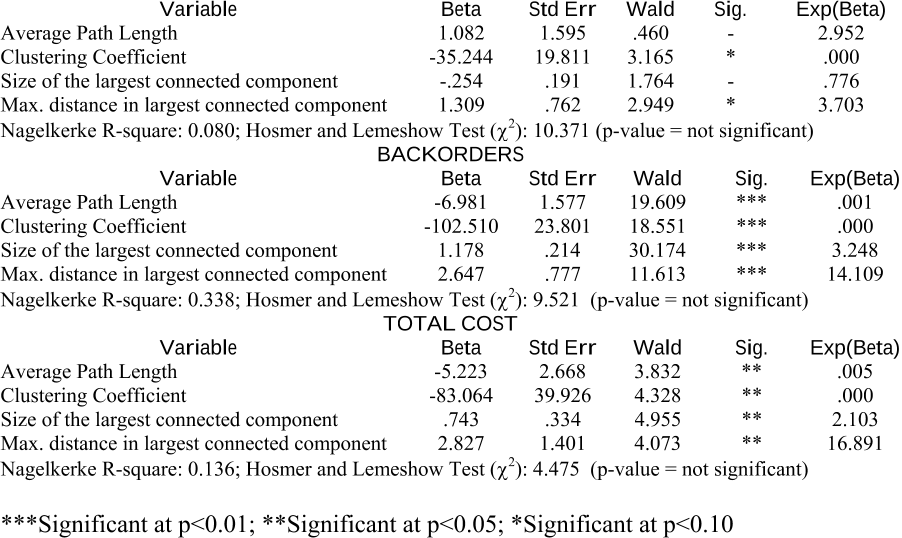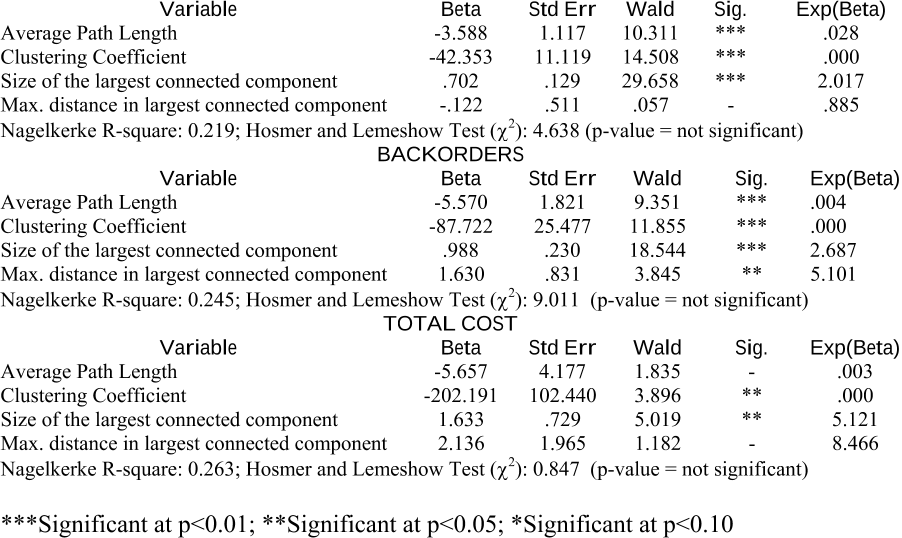




Did you find this useful? Give us your feedback










6 citations
6 citations
6 citations
6 citations
5 citations
...Nayar and Vidal [20] focussed specifically on the robustness of supply chain networks against ‘disruptions’, and used a multi-agent system to model the supply networks....
[...]
...[20] A. Nair and J. M. Vidal, ‘‘Supply network topology and robustness against disruptions–an investigation using multi-agent model,’’ Int....
[...]
33,771 citations
...The average path length of scale-free networks examined by Barabasi and Albert (1999) increases approximately logarithmically with the number of nodes, N....
[...]
...…average path length, clustering coefficient, size of the largest connected component and maximum distance between nodes in the largest connected component by using the definitions and conceptualisations in extant research (Barabasi and Albert 1999, Albert et al. 2000, Thadakamalla et al. 2004)....
[...]
...With the overall framework and constraints presented earlier, scale-free networks were generated by using the preferential attachment logic (Barabási and Albert 1999), and the random networks are generated by following a random attachment of nodes....
[...]
...The clustering coefficient of scale-free networks proposed by Barabasi and Albert (1999) are higher than that of the random networks and this difference increases as the number of nodes increase....
[...]
...In the preferential attachment topology we follow the standard algorithm (Barabasi and Albert, 1999) and connect each new node to one existing node but now each node’s probability of being chosen is directly proportional to the number of edges that it has....
[...]
[...]
7,736 citations
...Modelling of complex networks has focused on three main classes: (i) Random graphs: These variants of Erdo00 s–Rényi model (Erdo00 s and Rényi 1959, Bollobás 1985) are still widely used in many fields and serve as a benchmark for many modelling and empirical studies....
[...]
7,697 citations
...…average path length, clustering coefficient, size of the largest connected component and maximum distance between nodes in the largest connected component by using the definitions and conceptualisations in extant research (Barabasi and Albert 1999, Albert et al. 2000, Thadakamalla et al. 2004)....
[...]
...Studies, such as Albert et al. (2000), have focused on random graphs and scale-free network topologies to discern the error and attack tolerances of these networks. Consistent with this stream of research and with literature emphasising that supply networks follow topologies commonly observed in complex adaptive systems (Sun and Wu 2005, Surana et al. 2005, Bichou et al. 2007, Pathak et al. 2007, Wang et al. 2008), we investigate the robustness of supply networks by considering random and scale-free network topologies. The theory of random networks has its origin in the use of probability methods in problems related to graph theory. Erdo s and Rényi (1959) define a random graph to be one in which N nodes are connected to n edges, chosen randomly from N(N 1)/2 possible edges....
[...]
...…component within a network and the maximum distance between the nodes in the largest connected component, particularly in the context of robustness against random failures and targeted attacks (see, for example, Albert et al. 2000, Cohen et al. 2000, Moreno et al. 2002, Thadakamalla et al. 2004)....
[...]
...Studies, such as Albert et al. (2000), have focused on random graphs and scale-free network topologies to discern the error and attack tolerances of these networks....
[...]
...This study builds on the extant literature in statistical physics that examine the error and attack tolerance of complex networks (Albert et al. 2000, Thadakamalla et al. 2004), and consider the impact of supply network characteristics, such as average path length, clustering coefficient, size of…...
[...]
[...]
7,116 citations
...Erdo00 s and Rényi (1959) define a random graph to be one in which N nodes are connected to n edges, chosen randomly from N(N 1)/2 possible edges....
[...]
...Modelling of complex networks has focused on three main classes: (i) Random graphs: These variants of Erdo00 s–Rényi model (Erdo00 s and Rényi 1959, Bollobás 1985) are still widely used in many fields and serve as a benchmark for many modelling and empirical studies....
[...]